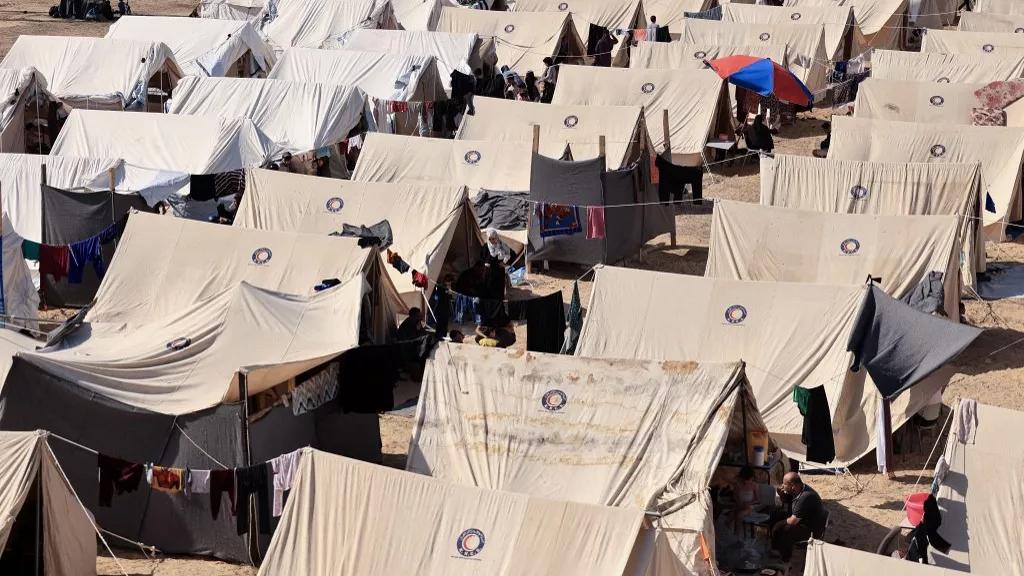
A camp run by the United Nations Relief Works Agency in Khan Younis, in southern Gaza, for Palestinians displaced from Gaza City. Samar Abu Elouf for The New York Times
ARTISTIC PRACTICE 2
Convened by Ahmad Darkhabani, Budour Khalil, Philipp Sattler, and Milica Tomić
Public Space is a term that can seem self-evident. It implies a shared asset, accessible to and belonging to all. Upon closer inspection, however, the term defies a universal definition. This is due to both the term’s origins in a specific historical conjuncture and the unevenness of access to public spaces, based on the socio-economic forces that produce and regulate them.
Public space is produced and controlled by power: property regimes, policing, design, and data decide who can linger, speak, sell, sleep, or protest. The term itself carries a Eurocentric genealogy from the 18th and 19th centuries, while today much that is considered “public” is privately owned or governed, and structured by surveillance and exclusion—sorting bodies by class, race, gender, citizenship, and ability.
This semester’s Artistic Practice II treats public space as a contested protagonist: Who builds and regulates it, and how do we, in turn, get shaped, screened, or expelled by it? What do our streets, squares, and notice systems reveal about the social, political, and economic forces in the city? How can art expose these infrastructures, reframe them, or interrupt them with practices of care, refusal, and counter-narration? We will transition from concepts to concrete sites in Graz, examining artistic interventions that directly reflect on or intervene in the city’s realities, and analyzing and producing interventions that test rules, redistribute visibility, and imagine more just forms of publicness.

Photography: Nebojša Milikić, Belgrade, 2000
The title of the course originates from the title and the content of the work by cultural worker and researcher Nebojša Milikić, Naša zgrada (Our Building), 1998–2002. Our Building is a long-term project engaging with the Yugoslav/Serbian housing typology, in which the issues of a specific apartment building are rendered legible within the broader context of the privatization of Yugoslav Socially Owned Property. Through tenant meetings, notices, and recorded conversations—broadcast as 3–5-minute radio segments —Nebojša Milikić documents how governance, conflict, care, and privatization processes shape everyday collective life. Staircases, entry halls, and notice boards appear as arenas where rules and voices are juxtaposed and navigated, exposing how “publicness” is produced (and limited) in relation to property. The work unfolds in two directions: it renders privatization processes publicly articulated and reflected, and it actively intervenes by recording and broadcasting ongoing tenants' meetings, opinions, and discussions, thereby addressing tenants as active subjects, fostering awareness and responsibility regarding these processes.